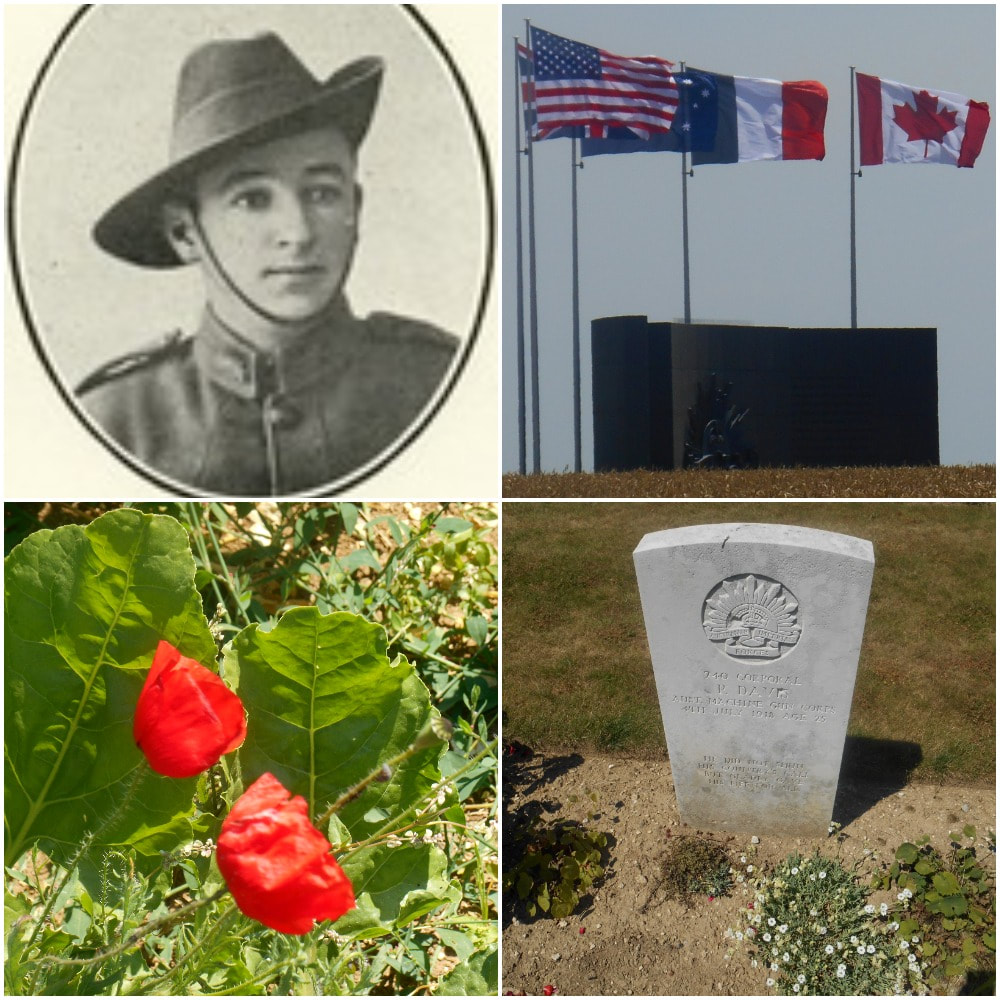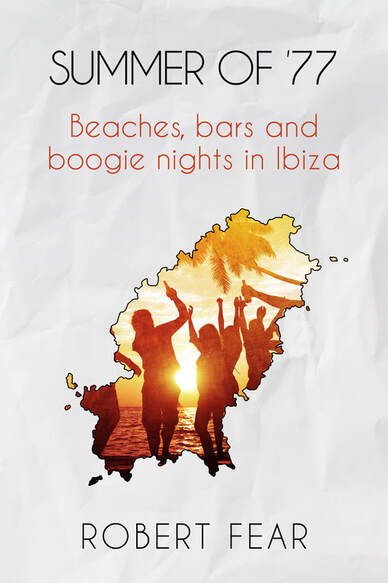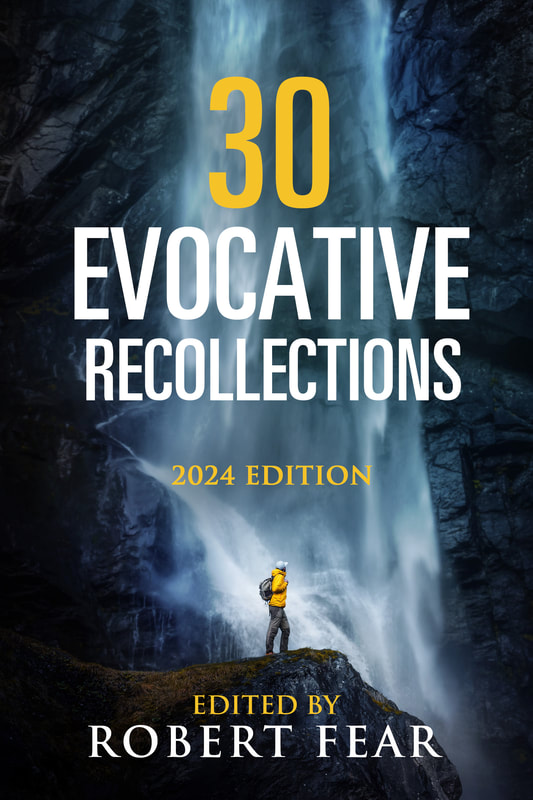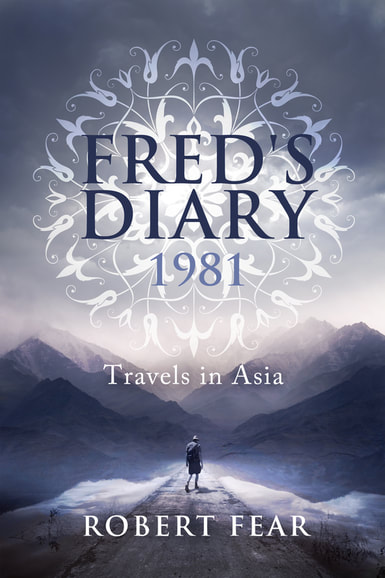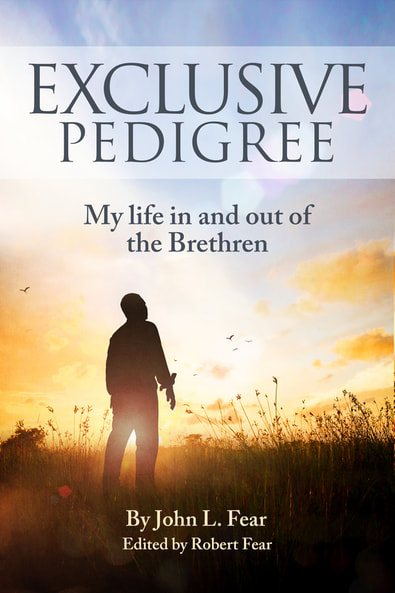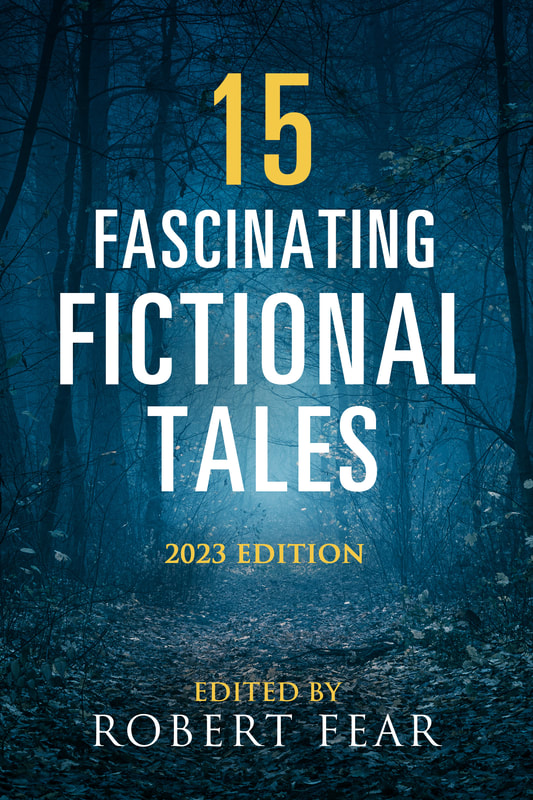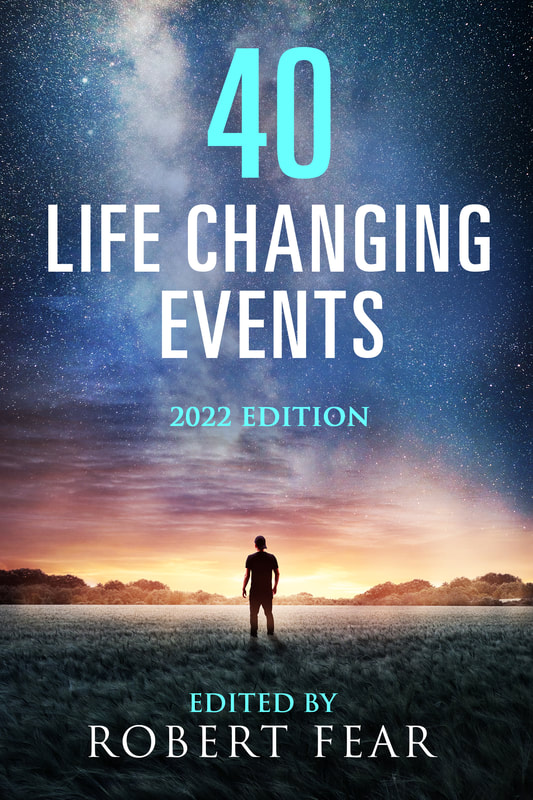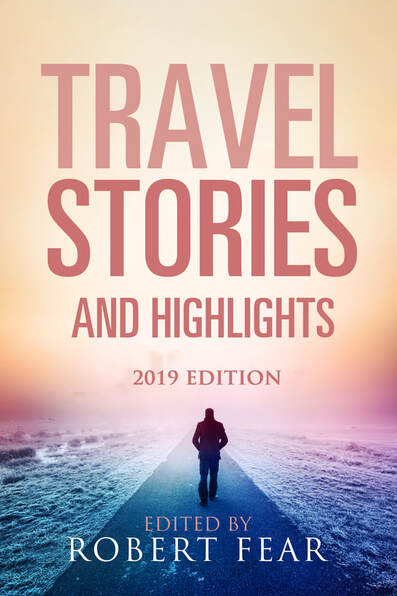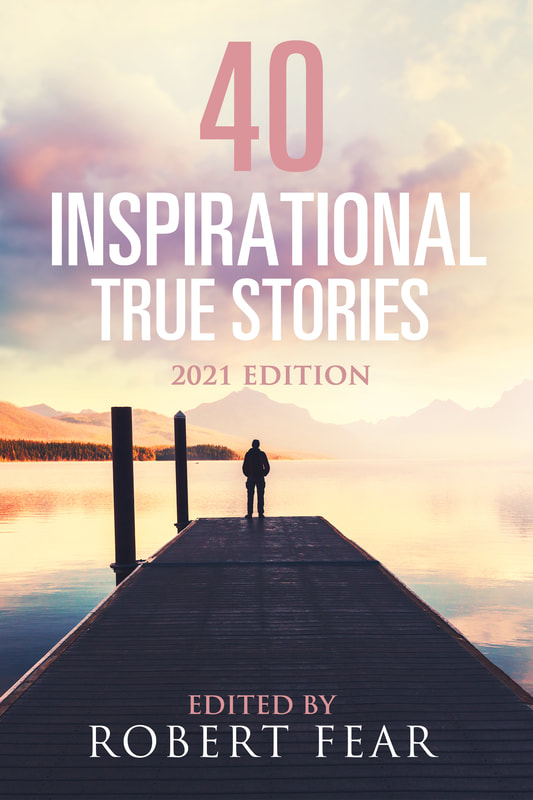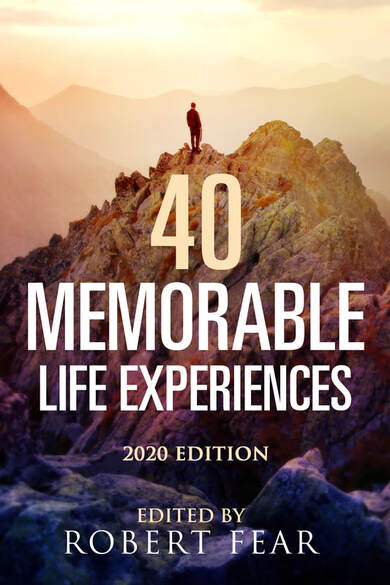Poppies in the Battlefield by Elizabeth Moore
I take an early train from Gare du Nord to Amiens. I have just 24 hours to see the battlefields of the Somme and visit the grave of Corporal Percy, #740, service number 20766, who died 3 months before the end of WW1, aged just 25.
The hotel is by the station, clean but impersonal and the town of Amiens is quiet as I walk to the cathedral. I am impressed. The silent beauty of this building, its statues, stained glass and its vaulted nave seem to reach from its 13th century origins, enfold the horror that was the Somme and keep it close.
Everywhere I can buy little wooden crosses centered with red poppies. I decide the small, round stone I have carried with me from Australia means more, a simple link between my uncle’s final resting place and our homeland. I will place it on his headstone.
In my hotel, World Cup games stream in the foyer and my waitress proudly announces her name is Mathilde. “For all the Australians. My mother and my family love your country.” I have heard of this enduring respect for our diggers and I nod and smile. “Thank you.”
I retire after my evening meal as I have an early tour to Hamel, the site of Monash’s 93 minute battle in July, 1918. Hamel Wood is recorded as an allied victory, but our survivor of Gallipoli and three years on the Western Front lies forever in this clear and beautiful countryside.
The centenary of the battle is to be commemorated this week. When we reach the hill above the little town, men are already unloading seating, erecting tents and unravelling electrical wiring. Their labour is purposeful and ordered. They are treading a battlefield as they work silently. It does not feel like a normal worksite; there is an air of dignity and respect.
This is the Australian Memorial, but the flags of the USA, France, Canada and the United Kingdom have joined my country’s standard to form a guard of honour. Words of thanks in French from Georges Clémenceau are echoed in translation on either side of the Rising Sun insignia, a small knitted poppy has been tucked gently into one of its scrolls.
The trenches are still outlined in the soil, surrounded by wheat fields. Poppies grow among the sugar beet and the sleepy village in the valley below raises its lone church spire in silent salute. I try to imagine the slaughter and suffering of that day where 1,400 were killed or wounded and I realise a solemn fact; sandbags and foxholes don’t stop bullets. The morning is perfect, sunny with just a ruffle of breeze, and blood-soaked carnage seems impossible. This small corner of France has finally created peace and calm where there was bitter fighting.
We drive on to Villers-Bretonneux, passing the lonely road taken to battle. Perhaps this is the Mule Track where Corporal Percy was initially buried. Laid temporarily beneath a rough wooden cross with crude lettering hastily painted in white; a waiting room for the final farewell.
I visit the Monash Centre behind the solemn memorial but I can’t align the modern, hi-tech displays, the cutting-edge photo images, the chevron wall of Australian timbers, even the automatic fittings in the rest rooms, with the simple graves outside. Bells and whistles for $100,000,000. I feel distinctly uncomfortable and realise I don’t agree with the vanity of this controversial project.
The graves of the cemetery stand in white military rows. It is much smaller than I expected but still too large; so many souls at rest in graves, unvisited by families adrift across oceans. The privilege of being able to pay my respects is not lost on me. I follow several family members who have made the long journey. Our boy has not been forgotten.
A small group of local school children walk carefully between markers, clutching pens and paper, searching for names and dates; a history lesson on their doorstep. A boy and a girl approach me and announce they are the leaders of the group. They practise their English carefully and I ask their teacher if I can give them a memento. He nods and I hand them each a kangaroo magnet finished in Aboriginal artwork. I wonder if older members of their families will see the souvenirs and remember oral histories of brave Aussie diggers.
I farewell the children and begin my search. I have a map and I have a row and a plot number. It is ordered and peaceful, not like the battle that brought him here. I roll the small pebble in my fingers as I walk.
I find the beloved family name chiseled in marble, small white daisies, tangled but respectful at its base. It’s a time to talk to one never met and shed tears for the life never lived in full. Lest We Forget.
